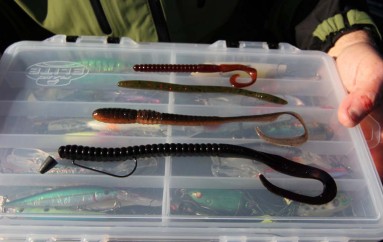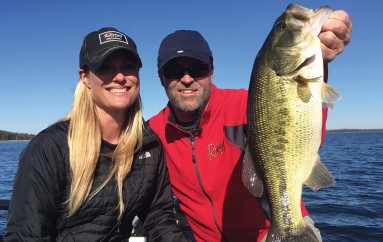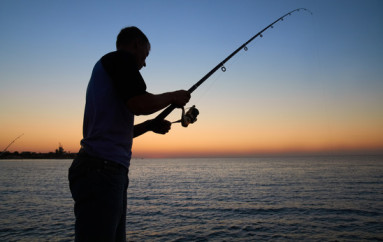
A Benefit of Fluorocarbon That No One Discusses, But Should
Originally Published on May 29, 2012 “From the Dock” NBC Sports
When castable fluorocarbon lines first hit the market I loaded up up a couple reels before heading to famed Chesapeake Bay for some striped bass fishing. I found the first generation of these lines was a bit too stiff for good manageability, which also caused casting distance to suffer, but there were some definite bright spots as well. For one, I was shocked how abrasion resistant the line is, a point highlighted in dramatic fashion late on day one of the trip.
We has stopped to work a bridge abutment that afternoon to fish a current seam created by the outgoing tide. The stripers were using the slack water in the same fashion river smallmouths do: as a holding place to wait for dinner to wash by in the fast water. The striper I hooked on my second cast to the bridge wasn’t huge, maybe 8 pounds, but on the lighter spinning gear we were using, the fish was plenty big.
At the hookset, the fish ran with the current down the length of the bridge abutment, then turned and ran up the opposite side. My drag was set pretty tight for the line I was using (12-pound). Even so, the fish took drag at will and quickly the situation became critical as several feet of my line was now in direct contact with the rough, rounded end of the concrete abutment. My partner moved to pull the anchor, then stopped when he realized it was an exercise in futility. The fight was going to end in a matter of seconds anyway; no fishing line could stand up to that kind of abrasion for long.
Or could it?
After a couple tense minutes, the striper moved back down current and below the bridge abutment. More importantly, it was now on the same side of the bridge as the boat and, after several minutes of steady pressure, ended up at the bottom of our landing net!
After a couple quick photos, we released the fish, then quickly pulled a bunch of line off the reel to survey the damage inflicted. The line was a complete mess. It was frayed badly in many places, with damage so severe both my partner and I struggled to believe the line actually held up long enough to catch the fish.
Today, the fact that fluoro offers superb abrasion resistance is not news. In fact, many anglers are now turning to fluoro to build leaders for chasing certain toothy critters like muskies, believing the line’s inherent invisibility in water leads to more strikes.
Yet, there is another of fluoro’s many characteristics that may be even more important than abrasion resistance for catching fish, and no one is talking about it. In fact, many anglers are not even aware of it. “It” is fluoro’s rapid sink rate as compared to other types of fishing lines.
In these days of targeting pressured fish, more and more anglers are looking for ways to make their presentations look more natural. Methods of weighting baits is one area of focus, especially after seeing the success baits like the Senko and Sinking Minnow still enjoy. Both these baits have a unique fall, that when watched underwater do a great job mimicking a wounded minnow. Most weighted baits, like a Texas-rigged worm, fall head-first versus horizontally. They also fall quickly, which is good at times, but hardly natural.
Learning to use the fall rate of your fishing lines as part of your presentation is a big first step toward becoming a more productive angler. Recognize that most braided lines today tend to float, mono is close to neutrally bouyant and fluoro sinks. Fluoro sinks so well, in fact, I now think of it as both line and sinker! Important? Yes! Because this line now allows me to downsize some presentations, which improves success in most waters.
This is important in many bass presentations, especially when fishing various soft plastics. I used to use braid when fishing baits like the Sinking Minnow as I could track the bait’s movement by watching the line on the surface. What I finally realized is the the floating line inhibited the bait’s movement. Switching to fluoro not only enhanced bait action by increasing sink rate, it offered near invisibility as well.
This may shock some, but I now use fluorocarbon for vertically jigging in current (used to be the domain of thin braids), and when achieving additional depth is important while trolling cranks.
I’ve also learned from underwater observation that fluoro sinks differently than anything else, giving the baits subtle movement that can be achieved in no other way. And fish respond.
Fluoro doesn’t do everything well, and still doesn’t have the knot strength of other types of lines, but it’s now on 75 percent of my fishing rods/reels because it’s proving to be the best choice in a lot more fishing situations than I used to give it credit for. If you haven’t tried fluoro, this year should be the year you begin experimenting with it. –Steve




